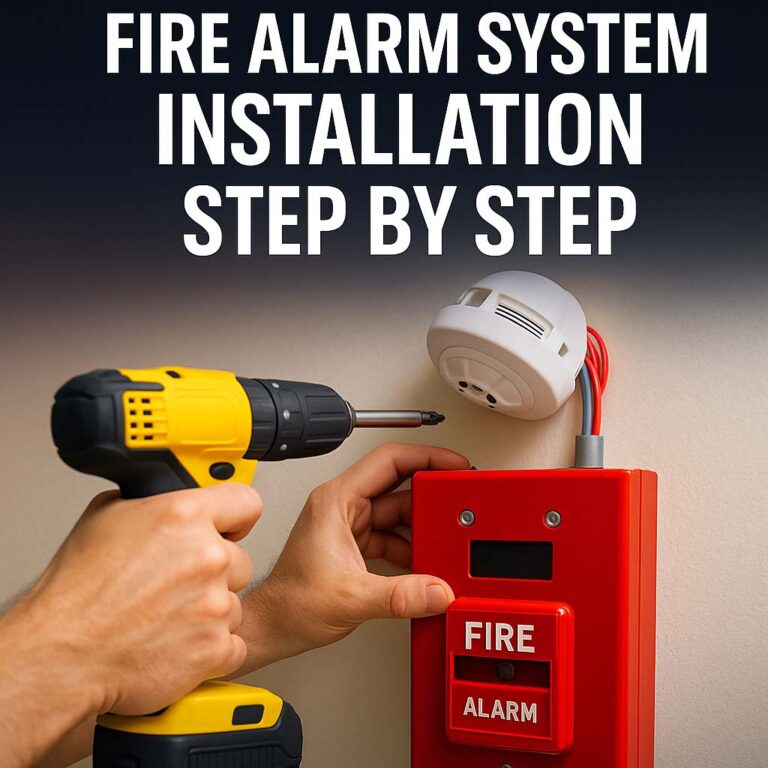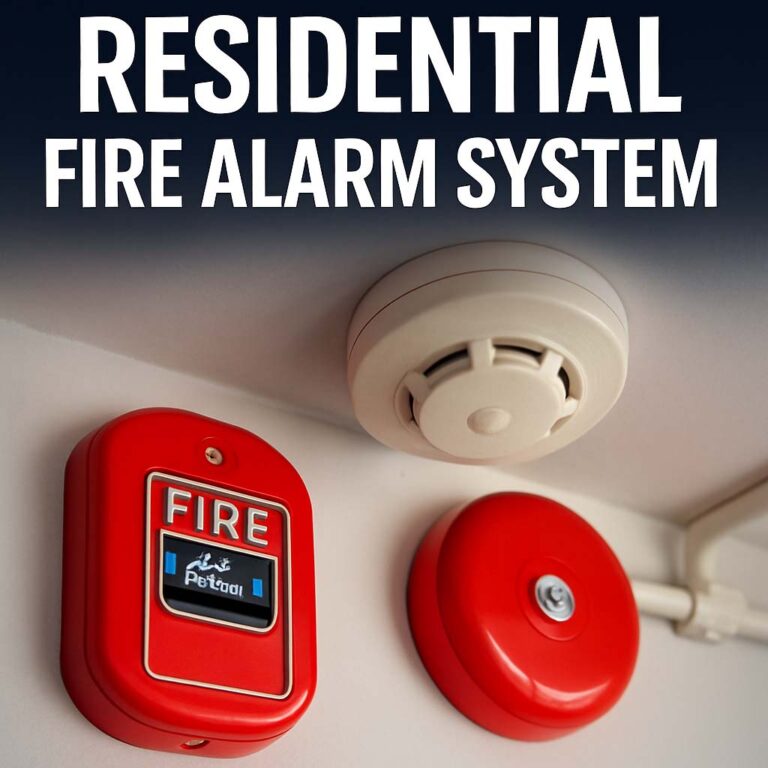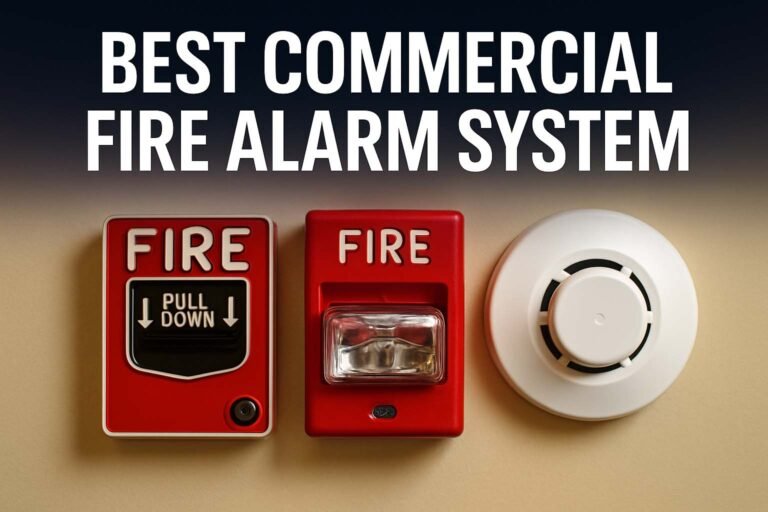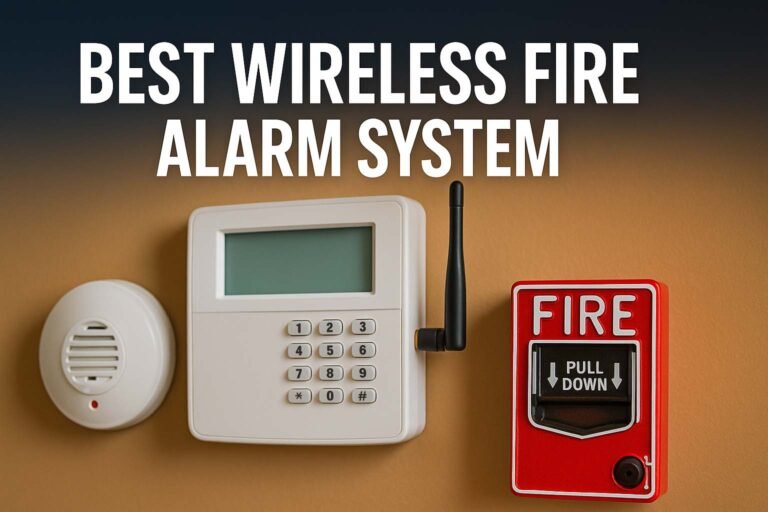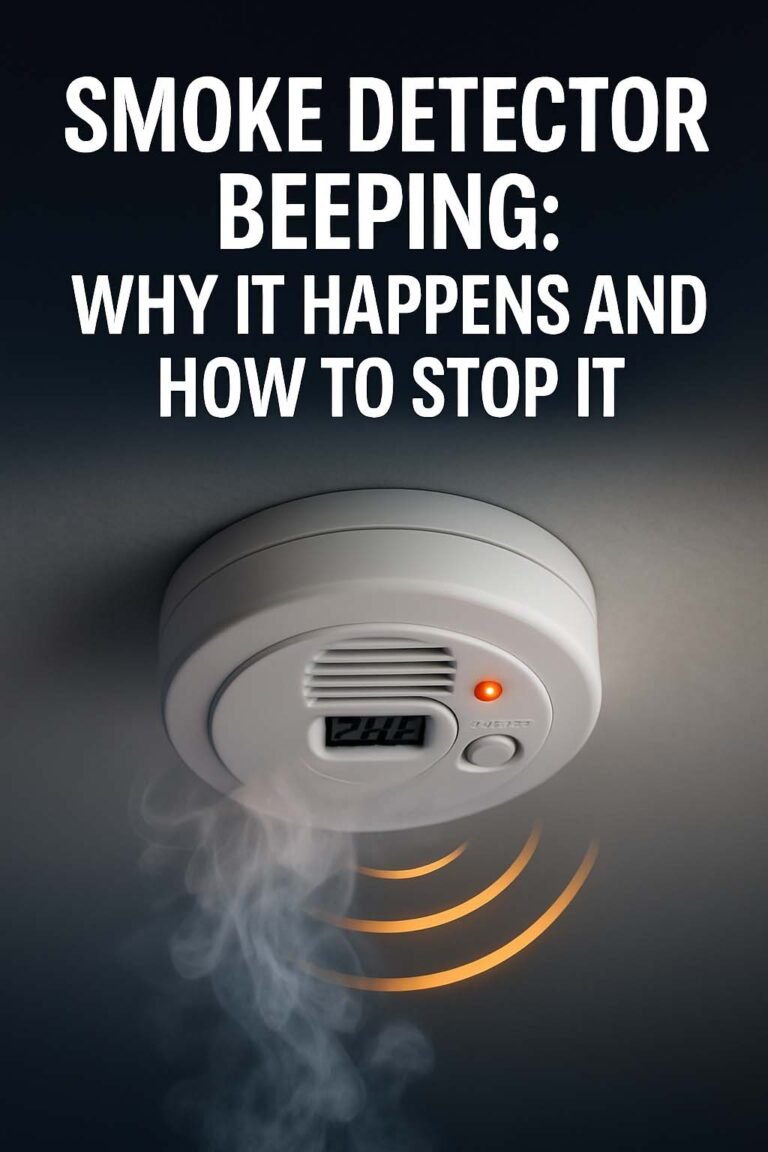Addressable Fire Alarm System
Fire safety is a critical aspect of any residential, commercial, or industrial building. Among the many tools developed to protect life and property, the addressable fire alarm system stands out for its advanced capabilities. This article explores everything about this system, offering in-depth technical insights and practical knowledge. Whether you’re upgrading from a conventional system or planning a new installation, this guide will provide all the essential information.

What is an Addressable Fire Alarm System?
An addressable fire alarm system is a smart detection and alert system. Each device within this system, such as smoke detectors, heat sensors, and manual call points, has its unique address. This unique identification allows the control panel to communicate with and pinpoint the exact location of each device.
In contrast, conventional systems only indicate the general zone where an alarm has been triggered. This zone-based method can delay emergency response. The addressable fire alarm system eliminates that inefficiency.
How an Addressable Fire Alarm System Works
The central control panel acts as the brain of the system. It continuously communicates with all devices via a loop wiring setup. Here’s a simplified process:
- A device detects smoke, heat, or flame.
- It sends a signal with its specific address to the control panel.
- The control panel immediately alerts building occupants and emergency services.
This smart communication reduces response time and helps locate the fire source quickly.
Components of an Addressable Fire Alarm System
Every addressable fire alarm system has several main components:
- Control Panel: Central hub that receives data from all devices.
- Smoke Detectors: Identify smoke particles in the air.
- Heat Detectors: Sense temperature changes.
- Manual Call Points: Allow manual activation of the alarm.
- Notification Devices: Include strobes and sirens to warn people.
- Power Supply Units: Ensure uninterrupted function during power outages.
Each component plays a crucial role in effective fire detection and notification.
Benefits of an Addressable Fire Alarm System
An addressable fire alarm system offers several distinct advantages over conventional systems:
Pinpoint Detection
Each device has a unique identifier. This helps firefighters and safety personnel locate the source instantly.
Reduced False Alarms
These systems are more accurate. They can differentiate between real threats and harmless triggers.
Scalability
It is easy to add or remove devices. This makes them ideal for growing buildings and businesses.
Efficient Maintenance
The system can alert you when a specific device needs servicing. This prevents downtime and improves safety.
Cost-Effective in the Long Run
While the initial investment may be higher, the benefits outweigh the cost over time. Reduced false alarms and less downtime save money.
Addressable vs Conventional Fire Alarm Systems
Understanding the differences can help you decide which system fits your needs. Here’s a comparison:
| Feature | Addressable System | Conventional System |
|---|---|---|
| Device Identification | Individual (unique address) | General (by zone only) |
| Cost | Higher initial cost | Lower initial cost |
| Scalability | Highly scalable | Limited scalability |
| Maintenance | Specific device monitoring | Manual inspection needed |
| False Alarm Detection | More accurate | Less accurate |
| Installation Complexity | Requires skilled installation | Easier to install |
Installation Considerations
Installing an addressable fire alarm system requires careful planning. Here are important factors to consider:
Wiring Infrastructure
Addressable systems use a loop wiring structure. Devices are connected in a loop, and each can be identified individually.
System Layout
Design the layout based on the size and structure of the building. Taller buildings may need more loops and power supplies.
Device Spacing
Follow local fire safety codes. Smoke and heat detectors must be installed at optimal distances.
Integration with Other Systems
Modern fire alarm systems can integrate with HVAC, elevators, and security systems. This improves response actions in emergencies.
Maintenance and Testing
Routine maintenance is key to keeping your addressable fire alarm system running optimally. Here are best practices:
- Monthly visual inspections.
- Quarterly testing of detectors and alarms.
- Annual full system testing.
- Replace batteries every 1-2 years or as needed.
- Maintain a logbook for maintenance records.
This proactive approach minimizes downtime and ensures compliance with fire safety standards.
Programming and Configuration
Programming is a crucial step. Each device must be assigned an address. The control panel is configured to recognize each device’s location and function. This programming can be done manually or via software, depending on the brand and system used.
System configuration also includes setting alarm thresholds, notification delays, and integration parameters.
Common Applications of Addressable Fire Alarm Systems
These systems are ideal for large buildings and complex infrastructures. Common installations include:
- Hospitals
- Schools and universities
- High-rise buildings
- Airports
- Factories
- Shopping malls
The adaptability and scalability make the addressable fire alarm system a top choice in modern fire protection.
Advanced Features to Look For
Modern systems come with high-tech features. These improve safety and user experience:
- Graphic User Interface (GUI): Simplifies monitoring.
- Remote Access: Check system status from mobile devices.
- Event Logging: Tracks alarms, tests, and faults.
- Voice Evacuation Systems: Provide clear voice instructions during emergencies.
- Automatic Dial-Out: Sends alerts to emergency services and building managers.
Choosing the Right System for Your Needs
The selection process should consider the building’s size, use, occupancy, and budget. Here’s a quick guide:
| Building Type | Recommended System Type |
|---|---|
| Small Office | Basic addressable or Wireless Fire Alarm System |
| Large Office | Fully addressable with multiple loops |
| Warehouse | Heat-detection-focused addressable |
| School | Smoke and manual call point integration |
| Shopping Mall | Advanced system with voice evacuation |
For commercial use, explore the Best Commercial Fire Alarm System to get the most reliable setup.
Integration with Wireless Technology
Some addressable systems now support wireless devices. These systems combine wired control panels with wireless sensors. It’s useful in older buildings where rewiring is hard. Also, wireless systems reduce installation time.
This is why many now consider the Best Wireless Fire Alarm System as a practical, scalable, and safe alternative.
Compliance and Legal Standards
Your addressable fire alarm system must comply with local and international codes:
- NFPA 72 (National Fire Alarm and Signaling Code)
- BS 5839 (UK Standard for Fire Detection)
- UL Listed Devices (for quality and safety)
Consult with local authorities and certified fire safety consultants. This ensures your system passes inspections.
Challenges in Using Addressable Fire Alarm Systems
No system is without challenges. Here are some to consider:
- High Initial Cost: Equipment and installation can be pricey.
- Complex Programming: Requires expert knowledge.
- Compatibility Issues: Not all brands work well together.
- Maintenance Skill Requirement: Needs trained personnel.
Despite these, the long-term benefits make it a wise investment.
Final Thoughts
The addressable fire alarm system is a powerful tool for fire detection and management. It gives you precision, reliability, and peace of mind. Its smart capabilities make it suitable for all kinds of buildings.
Whether you’re managing a small business or a large commercial space, switching to an addressable system enhances safety. Pair it with other solutions like the Best Commercial Fire Alarm System or consider the Best Wireless Fire Alarm System for specific needs.
Follow Us on Social:
Subscribe our Newsletter on Electrical Insights to get the latest updates in Electrical Engineering.
#FireAlarmSystem, #AddressableFireAlarm, #FireSafety, #FireProtection, #EmergencyResponse, #AlarmSystems, #BuildingSafety, #SmartFireAlarm, #FireDetection, #LifeSafety, #FireAlarmTechnology, #SmokeDetection, #SafetyFirst, #FireSystem, #FireSecurity

